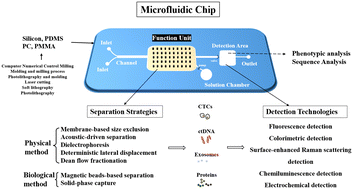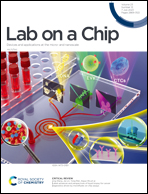Latest advances and perspectives of liquid biopsy for cancer diagnostics driven by microfluidic on-chip assays
Abstract
Microfluidic-based lab-on-a-chip technology is a multidisciplinary approach, which has evolved rapidly in the past decade and remains a hot research topic as a promising microanalysis platform for a plethora of biomedical applications. Microfluidic chips have been successfully applied in cancer diagnosis and monitoring, given that they can lead to the effective separation and analysis of cancer-derived substances such as extracellular vesicles (EVs), circulating tumour cells (CTCs) and circulating DNA (ctDNA), proteins and other metabolites. In particular, EVs and CTCs are two outstanding objects for cancer liquid biopsy, which share similar membrane structures but possess different sizes. Through molecular typing and concentration detection of EVs, CTCs and ctDNA, disease-related information can be well-learned, including the development stage and prognosis of cancer. However, the conventional separation and detection methods are often time-consuming with limited efficiency. In comparison, the use of microfluidic platforms can effectively simplify the separation and enrichment process and improve the detection efficiency significantly. Although review papers have been published on the application of microfluidic chips for the analysis of objects of liquid biopsy, generally they focused on a specific detection target, lacking a descriptive extraction of the commonality of LOC devices used in liquid biopsy. Thus, few of them present a comprehensive overview and outlook on the design and application of microfluidic chips for liquid biopsy. This motivated us to prepare this review paper, which is divided into 4 parts. The first part aims to elucidate the material selection and fabrication approaches of microfluidic chips. In the second part, the important separation strategies, including physical methods and biological methods, are discussed. The third part highlights the advanced on-chip technologies for the detection of EVs, CTCs and ctDNA by providing practical examples. In the fourth part, novel on-chip applications of single cells/exosomes are introduced. Finally, the prospective outlook and challenges for the long-term development of on-chip assays are envisioned and discussed.

- This article is part of the themed collection: Lab on a Chip Review Articles 2023


 Please wait while we load your content...
Please wait while we load your content...